The power of nature is not just in its sweet smells and beauty, but in the meaning that flowers and plants hold. This is why many countries have chosen a national flower to represent their identity—one that embodies cultural values, historical moments, and national heritage.
Remitly is all about connection, whether through sending remittances to help loved ones or sharing resources that celebrate our unique and shared history. So we’ve put together this guide to highlight official (and not so official) national flowers around the world, their legends, and why these symbols hold so much significance.
What makes a flower “national”?
There are two flowers that represent pride: the Indian plum and the amaryllis. People take pride in their homes, their countries, and everything that grows there.
Flowers have been cultivated for centuries and have become symbols of countries long before they even officially adopted them.
For example, the frenzy for tulips in the 1600s in the Netherlands means we now closely associate the flower with the Dutch. However, it’s never been recognized as the official national bloom. That title went to another flower (more on that later).
Official vs. traditional symbols
Countries choose their national flowers in different ways. Some are legally designated through acts of parliament or presidential decrees, while others become traditional emblems, accepted after centuries of use and cultural significance.
Take the cherry blossom, you’ll most likely think of Japan, but it’s never been formally legislated as the national flower—it’s simply universally embraced.
So, a flower may become a national flower because of:
- Cultural values
- Abundance
- Historical weight and symbolism
- Resilience in a difficult climate
Let’s take a look at some official and unofficial national symbols that represent history, unity, strength, and pride.
Blossoms of the Americas: pride and diversity
From north to south, the terrain in the Americas is diverse and abundant with some of the most beautiful plant life in the world.
The blossoms found throughout North, South, and Central America are true symbols of pride and endurance.
United States: rose
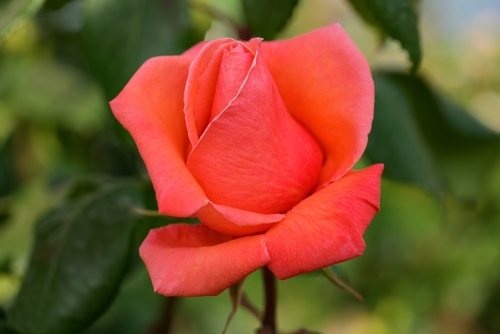
In 1986, in the White House Rose Garden, President Reagan declared the rose the nation’s national flower.
For almost 40 years now, the rose has been a symbol of love, devotion, and resilience. It’s not just the country that holds a national flower either. Along with the rose, each US state has its own flower, such as the California poppy and the Texas bluebonnet.
Mexico: dahlia
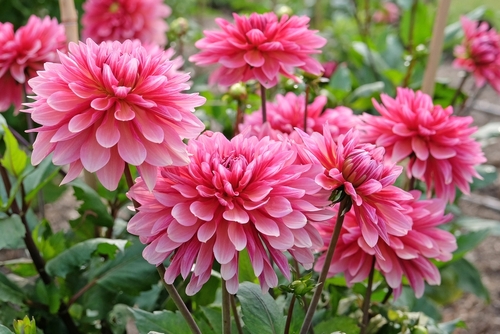
Cultivated by the Aztecs for food and medicine, the dahlia is native to Mexico and was named as the country’s national flower in 1963.
The dahlia’s symbol of creativity and cultural pride, represents not just Mexican history but its people as well. The intricate petals that form the colorful blooms have gone on to become a favorite throughout many European gardens as well.
Argentina: ceibo
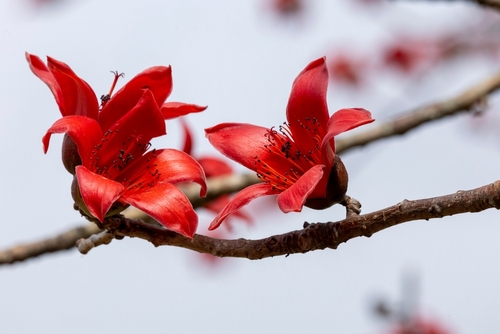
The ceibo was declared the national flower in December 1942. The flower is seen as a symbol of honor, bravery, and spirit.
Used to decorate parks and dye fabrics, this multi-purpose red bloom grows alongside rivers, lakes, and swamps. Argentina’s choice for national flower is not only for its beauty and symbols but for the legends and stories it represents for the native people of the land.
Canada: the unofficial, but voted for, bunchberry
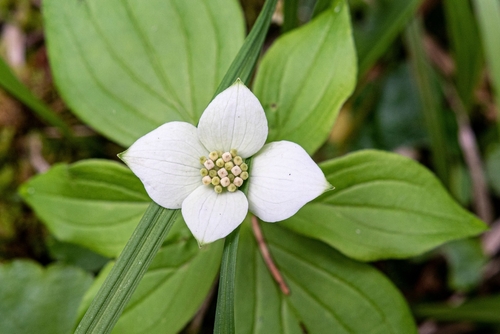
You may have thought the maple leaf was the official national flower (it’s even on their flag), but unfortunately, as the maple leaf is part of the maple tree, it doesn’t count.
The truth is, Canada has no legally designated flower. While some flowers are closely linked with the country and provinces, such as the trillium in Ontario, the wild rose in Alberta, or even the maple leaf, the country has never crowned them with the title of national flower.
In 2017, however, after 150 years without a flower to officially call their own, the people took a vote, naming the bunchberry the unofficial national flower to represent all the beauty Canada has to offer.
Asia in bloom: symbols of grace and tradition
Delicate flowers hold strong symbols for many countries across Asia. While these flowers remain unofficial national flowers, they have strong representations, making them national treasures.
China: the unofficial peony
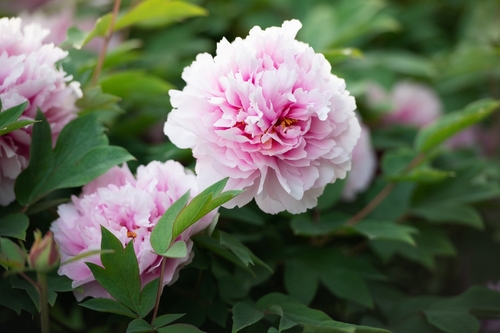
In 2019, a poll was conducted, and the peony overwhelmingly won the people’s vote, with 79% supporting it as the national flower. However, the government has still not officially confirmed this, leaving the peony as the preferred national symbol but not the official national flower.
The peony has over 4,000 years of history in China and continues to symbolize prosperity, good fortune, and honor—many attributes that strongly tie to Chinese history.
A close second and highly recognized flower is the plum blossom.
Japan: the unofficial cherry blossom
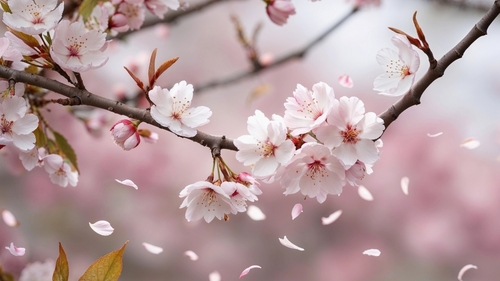
Japan and cherry blossoms go hand in hand. The annual hanami festival celebrates the tree’s fleeting bloom, reminding people of the world’s beauty and its delicate cycle of life.
The Samurai often compared their short lives to cherry blossoms—the pink blooms bursting from the trees’ branches each year have come to symbolize renewal and joy, as people from all over the world gather to see their beauty.
India: the unofficial lotus
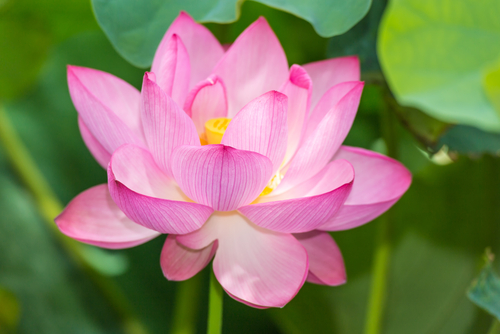
In 2019, India’s minister clarified that there is no official national flower. However, the lotus flower, also known as a water lily, remains the country’s favorite and beloved bloom.
A sacred flower among Hindus and other groups in India, the lotus symbolizes purity, rebirth, and strength, reflecting religious beliefs and the nation’s rich history.
Europe’s petals of history and heritage
Kings and queens in Europe went to great lengths to construct some of the world’s most ornate and beautiful gardens, planting flowers native to the land and from afar.
And while many European countries have particular flowers closely associated with them, you’ll be surprised to find out they aren’t always the official national symbol.
France: iris
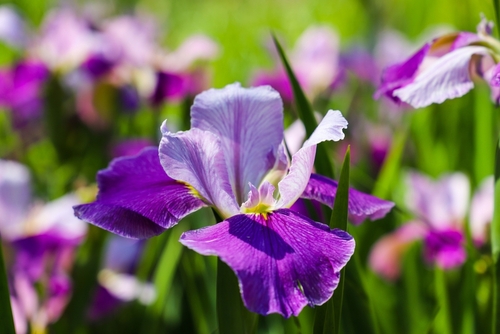
You might’ve thought lavender was definitely the national flower of France, a country so often associated with lavender fields. Though lavender is definitely loved, it’s not the official national flower.
While you can even see the iris in France’s emblem, the fleur-de-lis, there has been a long-standing confusion about its connection because ‘lis’ means lily.
Many historians, however, side with the idea that it’s a nod to the iris, which is lucky considering that it’s the national flower—as declared by Louis VII, who loved it dearly.
Netherlands: daisy
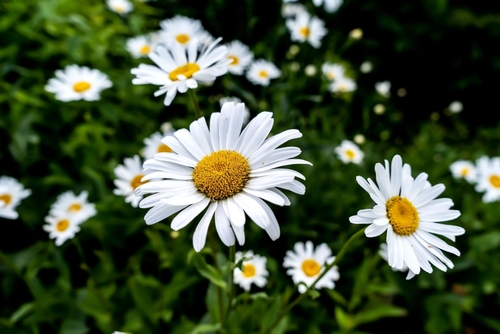
If you’re surprised it’s not the tulip, you’re not the only one. Tulips are so heavily associated with the Netherlands that people travel to the country each year to see the fields upon fields of colorful tulips at their peak bloom.
But the crown here goes to the daisy, thanks to a lot of Dutch men and their lawn mowers. This wasn’t a mere declaration, either—53,000 votes were cast and the daisy was the overwhelming winner among the Dutch people.
The country may be known for its tulips, but the daisy has captured the people’s hearts.
Scotland: thistle
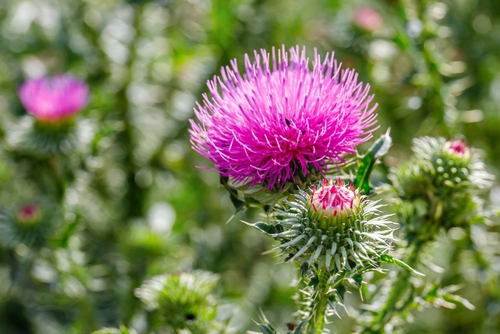
Since King Alexander III, the thistle has been the national emblem. Found across the low and highlands, the flower has a long history, with legends stating it saved the Scots from invasion centuries ago.
The thistle symbolizes strength, resilience, and protection, all of which encapsulate Scotland and its history.
Found on coins and embroidered on fabrics, the thistle is deeply ingrained in Scotland’s cultural identity and is one of the oldest recorded national flowers.
Africa and the Middle East: legends in the sand
Sand and sun can sometimes produce some of the most stunning vegetation. Africa and the Middle East have some truly incredible landscapes, and while the desert can be a tough place for flowers to thrive, it’s not impossible.
Some of the most beautiful and strongest flowers come from unlikely places.
South Africa: King Protea
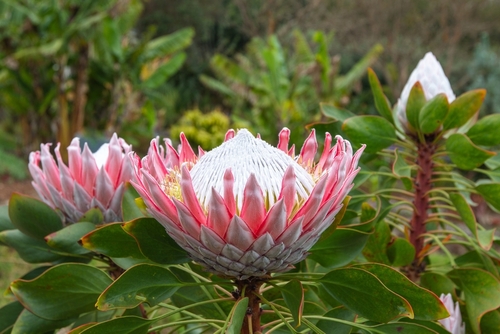
The name certainly doesn’t do this incredible flower justice. The King Protea was officially declared the national flower of South Africa in 1976 and has become an emblem found on birth certificates, passports, and even national sports teams.
A symbol of strength and beauty, it’s a testament to South Africa’s long history and the perseverance of its people.
United Arab Emirates (UAE): tribulus omanense
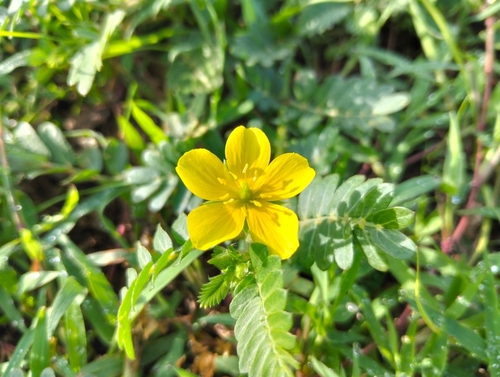
Said to be a symbol of resilience and strength, it also represents the region’s unique landscape.
The tribulus omanense is a small yellow flowering plant that thrives in desert climates, creating beauty and standing strong against the odds. This small but tough flower also prevents soil erosion, allowing for more biodiversity in the region.
The UAE considers the delicate and vibrant flower an embodiment of its people and the land, which is why it has been known as the national flower since 1973.
Ghana: impala lily
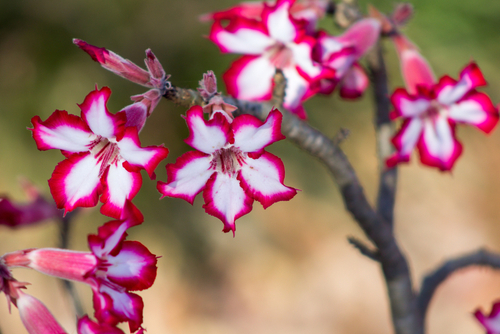
If you’ve never seen an impala lily, you’ll be struck by its vibrancy. The colors marking the edge of the flower’s petals are a thing of beauty and one of the many reasons Ghana declared it the official national flower.
While this delicate flowering plant looks and smells sweet, it can also reach great heights, measuring up to 16 feet tall.
An emblem now found around the country, and even on stamps, the tiny flower symbolizes resilience in a rugged terrain.
Oceania’s natural treasures
Australia: Golden Wattle
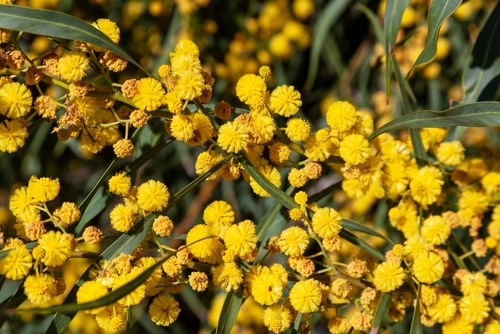
With over 1300 Acacia species in the world, and 960 of them located in Australia, it’s no wonder the Golden Wattle was declared the country’s national flower.
If you find yourself Down Under in September, you’ll enjoy seeing a sea of golden yellow fluffy flowers basking in the warm sun as spring begins.
The Golden Wattle is often said to symbolize unity and the nation’s spirit, which is hard to argue with when you see this yellow beauty with your own eyes.
The stories behind the symbol
Many flowers that eventually became treasured national symbols are linked to the legends behind them. These stories reveal the flowers’ beauty and strength, and whether they’re true or myth—they’re deeply rooted in many countries’ histories.
Scotland’s thistle defeats the Norse
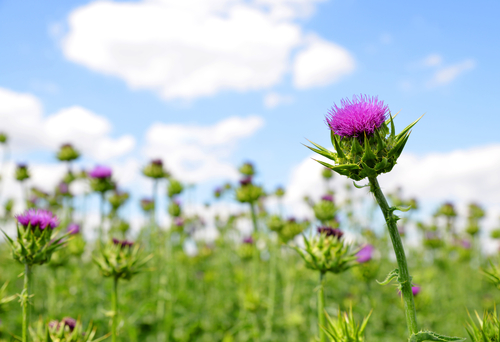
There are a number of legends that tell just how the thistle came to be Scotland’s treasured emblem, many of them coming from the time of Alexander III.
One particular legend dates back to 1263, when the king of Norway was determined to conquer the Scots. When Norse invaders crept into the night to surprise sleeping Clansmen, they walked barefoot to move more quietly.
Unfortunately, they couldn’t see in the darkness, stepping on thistles that caused them to cry out in pain and make their presence known—saving the Scots from invasion.
Argentina’s ceibo tells a story of courage and strength
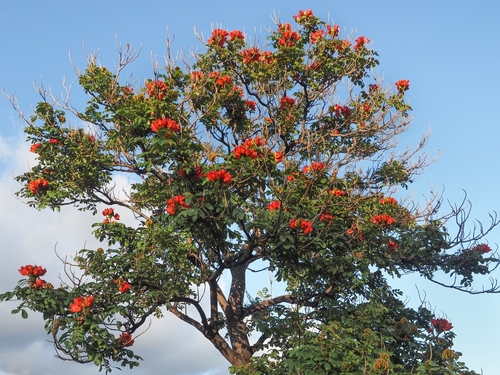
On another continent, Anahi, a Guarani woman, is still remembered today for her act of resistance. Condemned to be burned, the legend claims she sang as flames engulfed her, and from her ashes, the ceibo tree grew.
The flowering tree reminds the people of Argentina of the courage, resilience, and strength of the Guarani people.
A world united by flowers: celebrating our natural heritage
The beauty in flowers is not just how they look, but what they represent. National flowers aren’t chosen at random. They embody resilience, hope, tradition, and much more.
These symbols, official or not, have united people under shared stories that stretch across centuries. When it comes to flowers, even the most delicate can thrive against all odds.
Want to learn more about culture? Check out our other guides in Lifestyle & Culture for more resources.
How Do National Flowers Relate to the Natural Landscapes Found in Places Like Lava Beds National Monument?
National flowers often reflect the unique ecosystems of their regions, embodying the flora and scenery that define a landscape. In places like Lava Beds National Monument, these flowers thrive in the rugged terrain shaped by volcanic activity. Visitors can truly appreciate nature’s artistry when they explore the wonders of lava beds.
FAQ
How are national flowers officially chosen?
Flowers are officially chosen in different ways—some are declared by a president or parliament, and others are voted for by the people.
Can a country have more than one national flower?
Most countries have only one official national flower, though they may have more than one flower associated with them.
For example, the Netherlands’ national flower is the daisy, but tulips are so heavily associated with the country that many people believe it’s the national flower.
Do all countries have national flowers?
No, not every country has an official national flower. However, they often have a flower closely associated with them, such as the cherry blossoms in Japan.